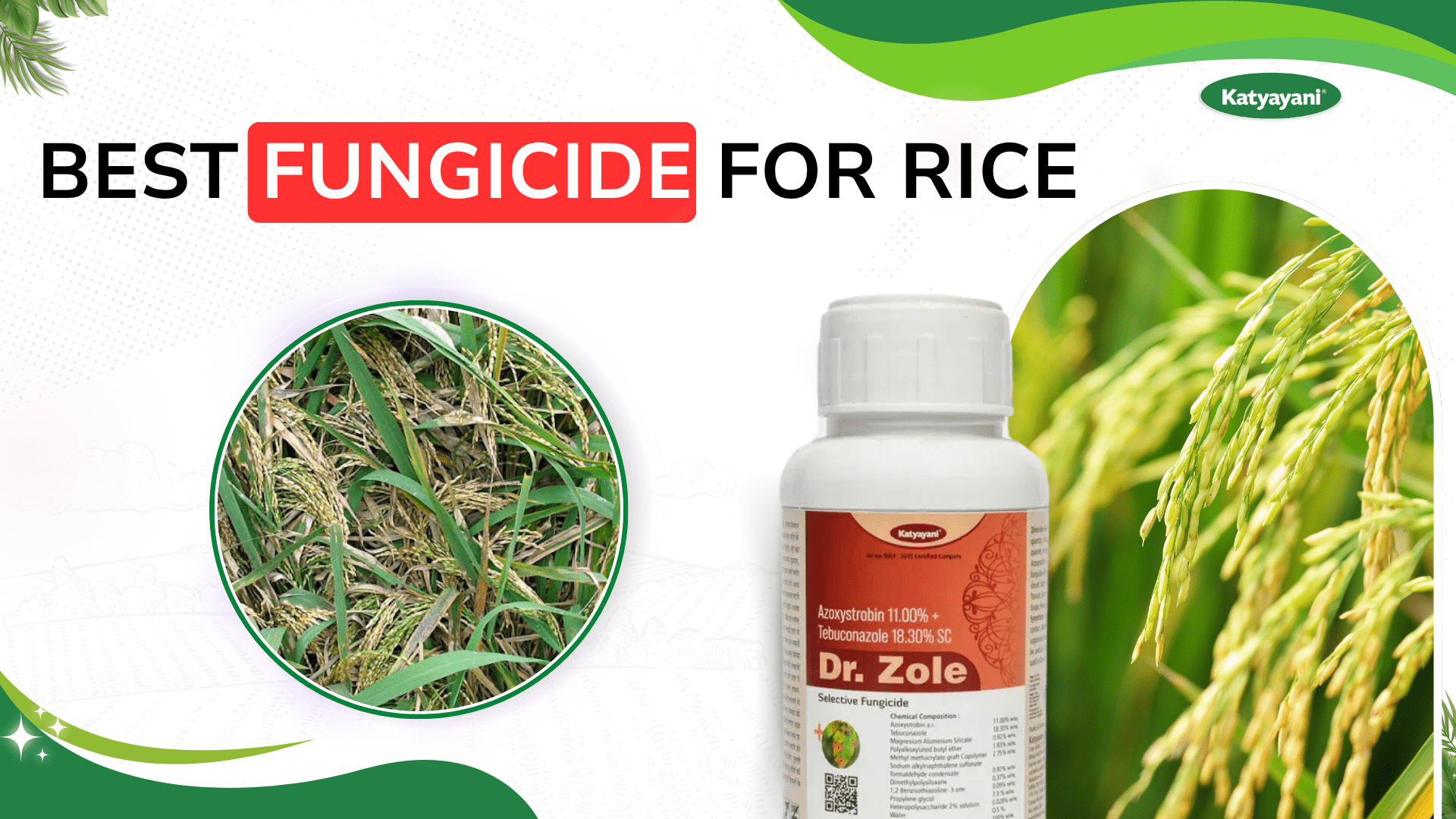Rice cultivation plays a vital role in India’s agricultural economy, but diseases like Sheath Blight—caused by the fungus Rhizoctonia solani—can lead to major crop losses. This disease affects the lower leaf sheaths and gradually spreads to the entire plant, disrupting photosynthesis and reducing both grain quality and yield.
What is Sheath Blight?
Sheath Blight begins as oval or elliptical spots near the water line of rice plants. These lesions expand and merge, eventually covering the leaf sheaths and leading to withering or plant death. If left unmanaged, it significantly impacts the grain-filling process, resulting in partially filled panicles and poor harvests.
Conditions that Favor Sheath Blight
The disease thrives in the following environmental conditions:
-
High humidity (96%–100%)
-
Temperature between 28–32°C
-
Excessive use of nitrogen fertilizers
-
Dense planting and stagnant water
-
Presence of fungal sclerotia in water or soil
Introducing Katyayani Dr Zole: Dual-Action Fungicide
Katyayani Dr Zole is a highly effective fungicide specially designed to combat Sheath Blight in paddy. It contains:
-
Azoxystrobin (11%) – Blocks the fungus’s energy process, halting its spread
-
Tebuconazole (18.3%) – Damages the fungal cell structure, eliminating infection
Dr Zole not only protects the surface of the plant but also penetrates deep into plant tissues, ensuring internal and external disease control.
➡ Dosage: Apply 300 ml per acre with uniform spray coverage for optimal results.



